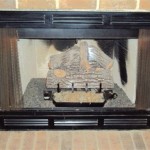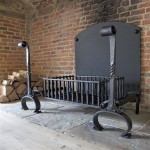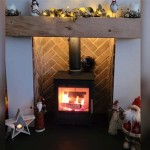The Definitive Guide to Best Fireplace Wood
Selecting the appropriate wood for a fireplace is a crucial consideration for maximizing heat output, minimizing smoke production, and ensuring fireplace safety. The type of wood burned significantly impacts the efficiency and enjoyment of a fire, as different species possess varying densities, moisture content, and burning characteristics. This article offers a comprehensive overview of the best wood choices for fireplaces, examining their properties and benefits to help homeowners make informed decisions.
The primary factors influencing wood quality include density, moisture content (seasoning), and the presence of resins or oils. Dense woods, such as hardwoods, generally burn hotter and longer than softwoods due to their higher concentration of combustible material. Proper seasoning, which involves drying the wood to a moisture content below 20%, is essential for efficient burning and reduced smoke. Resins and oils, common in certain softwoods, can cause excessive smoke and creosote buildup in the chimney, increasing the risk of chimney fires.
Hardwoods vs. Softwoods: Understanding the Fundamental Differences
Hardwoods are deciduous trees, meaning they lose their leaves annually. Generally, hardwoods are denser than softwoods, resulting in a higher energy content per unit volume. This density translates to longer burn times and greater heat output. Common hardwoods include oak, maple, ash, birch, and beech. The dense structure of hardwoods also contributes to a cleaner burn with less smoke production compared to many softwoods, provided they are properly seasoned.
Softwoods are coniferous trees, characterized by needles and cones that usually remain on the tree year-round. Softwoods are generally less dense than hardwoods and contain higher levels of resins and oils. While softwoods ignite easily and burn quickly, they produce less heat and more smoke than hardwoods. Common softwoods include pine, fir, spruce, and cedar. While some softwoods can be used for kindling, they are generally not recommended as primary fuel for a fireplace due to their rapid burn rate and potential for excessive creosote buildup.
Top Hardwood Choices for Fireplaces
Several hardwood species are highly regarded for their suitability as fireplace fuel. Each species offers unique characteristics in terms of heat output, burn time, and ease of splitting.
Oak is widely considered the gold standard for fireplace wood. It is a very dense hardwood that provides exceptional heat output and a long, slow burn. Oak burns cleanly with minimal sparking and popping, making it a safe and reliable choice. However, oak requires a longer seasoning period than other hardwoods, typically 12 to 24 months, to reach optimal moisture content.
Maple offers a slightly lower heat output than oak but still provides excellent performance as fireplace wood. Maple is relatively easy to split and seasons more quickly than oak, generally requiring 6 to 12 months of drying time. It burns cleanly and produces a pleasant aroma, making it a popular choice for many homeowners.
Ash is another excellent option for fireplace wood, known for its easy splitting and relatively quick seasoning time (6 to 12 months). Ash burns hot and clean, producing minimal smoke. It is also favored for its ability to burn even when not fully seasoned, although fully seasoned ash will always provide optimal performance.
Beech is a dense hardwood that provides excellent heat output and a long burn time, comparable to oak. Beech is relatively easy to split and burns cleanly with a bright flame. It requires a seasoning period of 12 to 18 months to achieve optimal moisture content.
Birch provides a good balance of heat output and ease of burning. Birch is relatively easy to split and seasons quickly, typically within 6 to 9 months. It produces a bright, cheerful flame and emits a pleasant aroma. However, birch can be prone to sparking and popping if not properly seasoned.
Considerations When Using Softwoods in Fireplaces
While hardwoods are generally preferred for fireplace use, certain softwoods can be used in specific situations, primarily for kindling or starting fires. However, it is crucial to understand the risks associated with burning softwoods and to take appropriate precautions.
Pine is a readily available and inexpensive softwood that ignites easily and burns quickly. Pine is often used as kindling to start fires but is not recommended as a primary fuel source due to its high resin content, which leads to excessive smoke and creosote buildup. If pine is burned, it should only be done in small quantities and with careful monitoring of the chimney to prevent creosote accumulation.
Fir is another common softwood that can be used for kindling or as a supplementary fuel source. Fir burns moderately hot and produces a pleasant aroma. However, like pine, fir contains resins that can contribute to creosote buildup. Therefore, it should be used sparingly and with careful attention to chimney maintenance.
Spruce is a softwood that is similar to fir in its burning characteristics. Spruce ignites easily and produces a moderate amount of heat. However, it also contains resins that can lead to creosote accumulation. Spruce is best suited for use as kindling or as a supplementary fuel source in combination with hardwoods.
Cedar is a softwood that is known for its aromatic properties and its ability to repel insects. Cedar burns quickly and produces a distinctive aroma. While cedar can be used for flavoring wood smoke when grilling, it is not generally recommended for fireplace use due to its high resin content and potential for excessive smoke production.
The Importance of Proper Seasoning
Regardless of the type of wood chosen, proper seasoning is essential for optimal burning performance and safety. Seasoning involves drying the wood to reduce its moisture content to below 20%. This process allows the wood to burn more efficiently, producing more heat and less smoke.
The easiest way to determine if wood is properly seasoned is to use a moisture meter. These devices are readily available and provide a reliable indication of the wood's moisture content. Alternatively, seasoned wood will typically be lighter in weight, have cracks in the end grain, and produce a hollow sound when struck against another piece of wood.
To season wood effectively, it should be split, stacked loosely to allow for air circulation, and stored in a dry, well-ventilated location. Covering the top of the woodpile with a tarp can help protect it from rain and snow while allowing air to circulate freely. The seasoning time varies depending on the type of wood and the climate, but hardwoods typically require 6 to 24 months to season properly, while softwoods may season more quickly.
Safe Firewood Storage Practices
Safe firewood storage is essential to prevent insect infestations, fungal growth, and fire hazards. Wood should be stored off the ground on a platform or pallets to prevent moisture absorption and encourage air circulation. The woodpile should be located away from the house and other structures to minimize the risk of fire spreading in the event of a chimney fire.
Avoid storing firewood indoors for extended periods, as this can attract insects and create a fire hazard. If firewood is stored indoors, it should be kept in a well-ventilated area away from heat sources. It's best to only bring in what you plan to burn in a 24-48 hour period.
Regularly inspect the woodpile for signs of insect infestation or fungal growth. If pests are detected, take appropriate measures to control them, such as using insecticides or removing the affected wood. Clearing brush and debris around the woodpile can also help prevent pest infestations.
Tips for Maximizing Fireplace Efficiency
Beyond selecting the right wood and seasoning it properly, several techniques can enhance fireplace efficiency.
Ensure the fireplace and chimney are regularly cleaned and inspected. Creosote buildup in the chimney can obstruct airflow and increase the risk of chimney fires. A professional chimney sweep can remove creosote and identify any potential problems with the chimney or fireplace.
Use a fireplace grate to elevate the wood and improve air circulation. This allows for more complete combustion and reduces smoke production. Arrange logs in a way that promotes airflow, such as a log cabin or teepee structure.
Consider installing a fireplace insert or door to improve heating efficiency. Fireplace inserts are enclosed fireboxes that fit inside the existing fireplace opening and can significantly increase heat output. Fireplace doors can help to reduce drafts and prevent heat from escaping up the chimney when the fireplace is not in use.

The Best And Worst Types Of Wood For Burning In Fireplace Bob Vila

The Best Wood Burning Fireplace Inserts Or Stoves Ecohome

Best And Worst Woods For Fireplaces

The Best Wood Fireplaces Of 2024 Direct Learning Center

The Best Wood Fireplaces Of 2024 Direct Learning Center

The Best Wood Fireplaces Of 2024 Direct Learning Center

Dk Studio

What Is The Best Wood For Fireplace Comfort All Winter Long

What Is The Best Wood To Burn In Your Fireplace Does It Matter

Fireplaces Vs Fireplace Inserts Which Is Right For You Arnies Appliances








